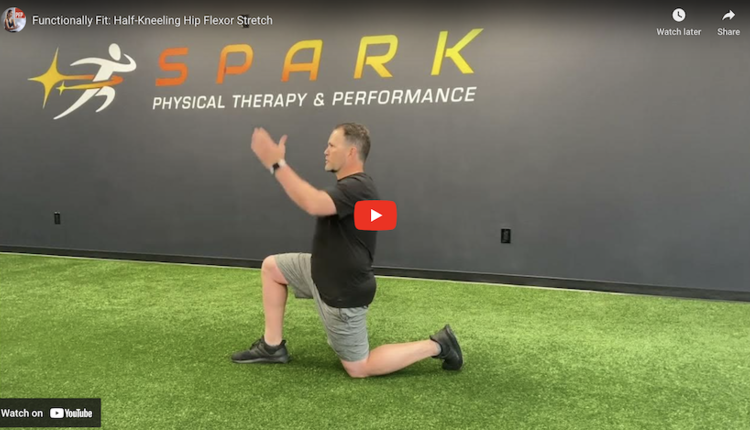Remember when you learned your ABCs? You recited the alphabet over and over you may have even sung the alphabet song while your teacher pointed to each letter on a chart. After mastering the 27 letters, you learned the distinction between the consonants and vowels. And finally, you learned you could form written words by placing the letters in a certain order. Now, you had a new way of communicating with others. Your choice of words strung together in sentences opened a way to share information, feelings and novel ideas. These very ABCs that were the building blocks for language can now be the very foundation that you can use to transition your business or medical practice in providing wellness services to your patients and community. In this article, the acronym ABCs will represent alliances, business models, customer's priorities and sources. Each letter of this acronym will help you construct and build onto your existing business so you can profit from the many opportunities that the wellness field can bring you.
What Is Wellness?
Before transitioning your business or medical practice to provide dynamic wellness services to your community, we need to identify "wellness" in relation to the centers under which they operate. The term "wellness" is very expansive, and "wellness centers," while seemingly specific to their missions, are just as diverse in the services they provide each unique in its approach and integration.
According to Joan Whaley Gallup, author of Wellness Centers: A Guide for the Design Professional, "Wellness centers are facilities that incorporate clinical and fitness components into a comprehensive health care center." These facilities offering "wellness" services are varied in the types of treatment plans, rehabilitation and workout programs available. Some wellness providers strictly offer nutritional counseling along with conventional and alternative medicines. And still others provide personal training supervised by a physician or health professional. All facilities, however, structure the "wellness" concept to include some key philosophical elements: an integration of conventional, holistic and alternative medicine, and a commitment of the practitioners and fitness professionals to help individuals reduce their risks of disease and injury, achieve optimal health and enhance the quality of life. Wellness, then, is generally used to mean a healthy balance of mind, body and spirit that results in an overall feeling of well-being.
While the "wellness movement" began in the 1950s, the modern concept of wellness did not become popular until the 70s. Besides the alternative approach to improve the "wellness" of an individual, the term today denotes any program or health- related practices, such as natural therapies or techniques, used to improve physical health. Recently, wellness has become a collaborative effort between medical practitioners and fitness professionals or specialists who provide preventive medicine and traditional exercises such as weight training or mind-body exercises like tai chi, yoga and Pilates. Wellness, then in fact, is also about healthy people maintaining their health proving that such wellness services or programs are not just for sick people. Wellness promoters believe that many factors contribute to a healthy lifestyle: living in a clean environment, eating properly, regularly engaging in exercise, finding career balance, while maintaining solid family and social relationships. These wellness programs can enable participants to stop smoking, deal with the stress in their lives and learn how to manage their weight, cope with loss, improve health and provide individuals with health risk assessments and screenings.
Wellness Business Models
Looking at the plethora of wellness options is a bit overwhelming, but for the medical community, alternative care providers and fitness professionals, these choices leave a wide range of business models for those businesses or practices that wish to transition into the wellness arena. And the diversity of these offerings affords each practitioner and fitness professional an opportunity to use their talents, education and expertise in a more comprehensive and complementary way.
Wade Harris, owner of Phase II Personal Training located in
Harris agrees with De
Harris adds that the addition of a medical practitioner is a natural extension of Phase II's revolutionary Physician's Communications program. "This program," explains Harris, "enables a personal trainer to gather information directly from a client's doctor, then tailor an exercise plan that best meets that client's training needs. After several weeks of the plan in action, the trainer reassesses his client's blood pressure, body fat, measurements and resting heart rate, and reports this progress directly to the client's personal physician." As a physician, physical therapist, personal fitness professional or alternative health provider, you know the benefit of working together as a team. You understand the advantage of a multi-disciplinary approach to healing and wellness. And if you want to be a part of that industry change, you need to make that transition.
The "Building Blocks" Let's Start with "A"
How do you convert your business or practice to an integrated wellness organization? How do you find the team to work with you? And who should be a part of your team? Let's look at the ABCs alliances, business models, client's/patient's priorities and sources. When I first began my business, I first networked among local businesses and then within the medical community. Networking works, I discovered, but forming alliances or partnerships is much more effective. Networking is a way to refer clients or patients, while forming an alliance is a commitment in working towards the same health-realized goals. Such an alliance is a joint venture, where each team member is accountable for spearheading, developing and implementing wellness services or programs. If you are looking to form such an alliance with a physician, chiropractor, personal trainer, nutritionist, alternative care provider, here are some suggestions:
Go beyond networking align yourself with medical practitioners, fitness professionals or therapists that speak the same language about health and wellness as you do. Your philosophy must match the other members of your team. Become partners, form an LLC and sign a contract this makes your relationship permanent and makes you accountable.
Be choosy develop your working relationship first by networking, then, work on a lecture series or other community events in which all of the members of the team make a contribution. Set specific goals decide who will be responsible for educating your clients and patients on health- related issues and who will diagnose and prescribe the treatment plan for the client/patient including exercise, massage, nutrition and alternative therapies.
Be credential-savvy! Physicians should collaborate with fitness professionals, exercise physiologists, massage therapists, chiropractors and acupuncturists who share the same vision but also have demonstrated and proven their competencies in working with a varied clientele, especially special populations. Be open to all the providers that can offer wellness services or programs at your practice or business! Specialists, such as those with degrees in sports conditioning, physical therapy, cardiac rehabilitation, industrial rehabilitation, ergonomics and cancer recovery, are just a few professionals who will enrich the "wellness" experience for your patient or client. You may want to consider aligning yourself with a psychiatrist whose primary specialty is to restore lost function caused by injury or disease. And fitness professionals should consider family practitioners, chiropractors and other allied health care providers who will improve the overall health of their clients. If a majority of your clients are cancer survivors, consider working with a local oncologist and reconstructive surgeon.
Position yourselves as experts who can help create a "well" community. You don't need every practitioner or fitness expert on your team, just a few who share your vision, philosophy and can demonstrate competency to form a well-designed, multi-disciplinary, patient-specific program. Start slowly you can always add more team members as your business or practice grows and matures.
View your clients/patients as strategic partners but most importantly, let them know that together, both you and their client will work toward mutual objectives. Give your patients/clients the tools to take charge of their health. After all, if they do not care for their bodies, where will they live?
*Look for the next installment of our series in the March issue, the conclusion of Gansel's "The ABCs of Wellness"
Marilyn Gansel is the founder and owner of Fitness Matters, the personal training studio. Marilyn belongs to the professional fitness organizations IDEA and ACSM. Marilyn is also a member of the PEAK Roundtable. For more information, please visit www.fitnessmatters.com.











